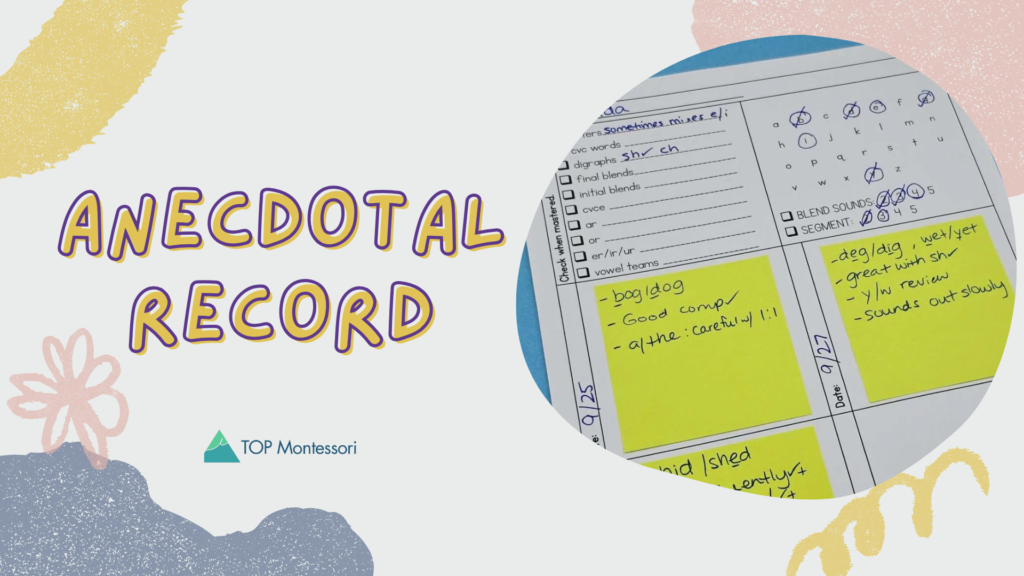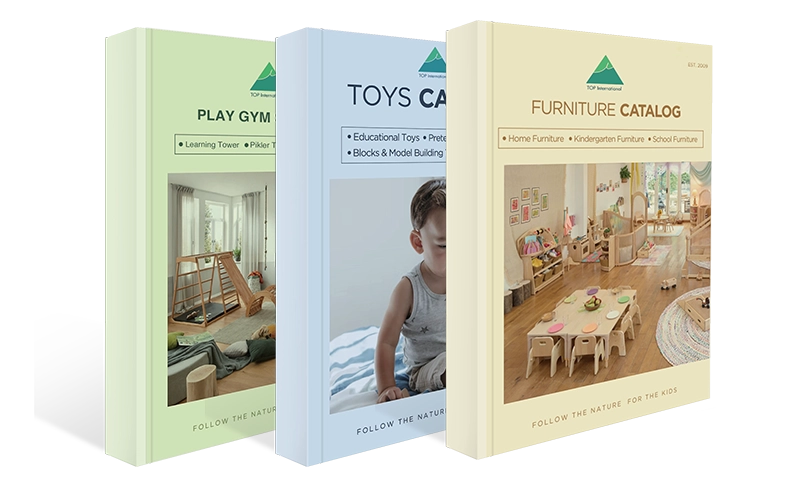How can teachers truly understand each child’s learning journey? Are standardized tests enough to reflect a student’s abilities, behaviors, and development? What if there were a simple yet powerful way to capture the moments that matter most in a child’s day-to-day learning, through real-time documentation like an anecdotal record?
Anecdotal records are one of the most effective tools educators can use to observe, document, and respond to student growth in real-time. It captures small but meaningful interactions, enabling teachers to uncover insights that standardized data often overlooks.
In this article, we’ll explore how anecdotal records can reshape your teaching practice, personalize instruction, and help children thrive. If you’re ready to make your observations work harder for your students, read on—we’re about to transform the way you see learning unfold.
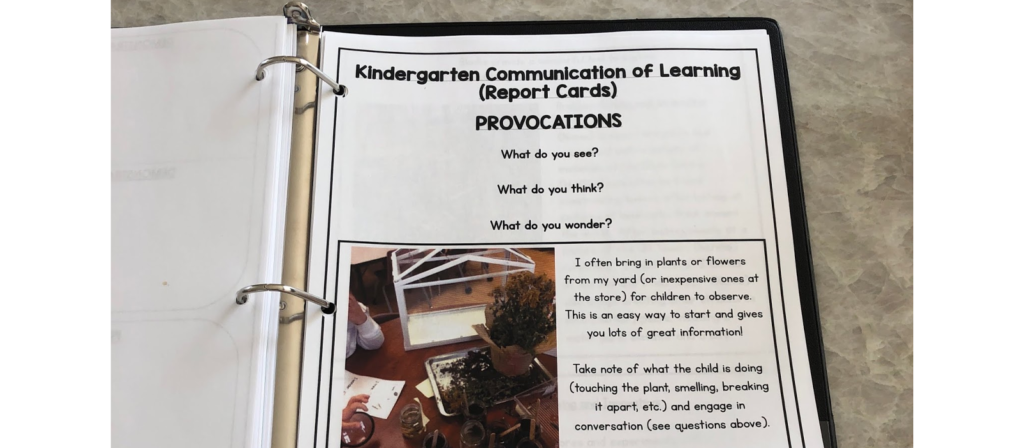
What Is an Anecdotal Record?
A
necdotal record is a short, objective narrative that captures a specific incident or behavior observed in the classroom. It’s a focused piece of
qualitative data
, typically recorded in real time or shortly after the event occurs. Unlike test results or checklists, anecdotal records document what a student does, says, or expresses in a natural setting, without teacher interference or pre-designed assessment tasks.
At its core, an anecdotal record is a tool for making the invisible visible. Whether it’s a child solving a puzzle without prompting, offering help to a peer, or showing frustration during a group task, these small moments tell big stories about development. And when recorded consistently, they provide a powerful lens into a student’s growth over time.
Why Are Anecdotal Records Important in Education?
In early childhood education, understanding a child’s development requires more than test scores and standardized assessments. This is where the anecdotal record becomes essential. It provides educators with a real-time, authentic view of how students behave, interact, and learn within the natural classroom environment.
Unlike rigid assessments that offer limited snapshots, anecdotal records allow teachers to observe learning as it unfolds. These records support a whole-child approach by documenting cognitive, social, emotional, and physical development. A single anecdote might reveal a student’s ability to take initiative, solve problems, or use language effectively—all in a moment that would otherwise go unnoticed.
Capturing the Full Spectrum of Learning
Anecdotal recording helps educators recognize learning styles, strengths, and areas for growth in a way that feels human and personal. For example, a teacher might document how a child transitions between activities or how they respond when a peer is upset. These moments provide insight into executive functioning, empathy, and adaptability—skills not captured on a multiple-choice test.
Moreover, anecdotal records help answer key questions:
- How does this student approach challenges?
- What sparks their interest?
- How do they relate to others?
When reviewed over time, these records form a narrative arc that reflects the student’s development, not just academically, but socially and emotionally too.
Supporting Responsive Teaching
Another major benefit of anecdotal records is that they allow for responsive teaching. Because teachers document observations in real-time, they can adjust instruction based on what students need in the moment. For example, if multiple records show that children are struggling with self-regulation during transitions, the teacher might add a visual schedule or extra support during those times.
This adaptability is especially valuable in Montessori and Reggio-inspired classrooms, where individualized learning and observation play a central role.
Building Stronger Communication
Anecdotal records also enhance communication between educators and families. When a teacher can say, “Yesterday, at 9:30 AM, your child helped another student tie their shoe and said, ‘I’ll teach you!’” it creates trust and transparency. These records form the basis for effective parent-teacher conferences, student portfolios, and collaborative goal setting.
In summary, anecdotal records are not just helpful—they are essential. They bring depth to assessment, empower responsive instruction, and center the child’s lived experience at the heart of education.
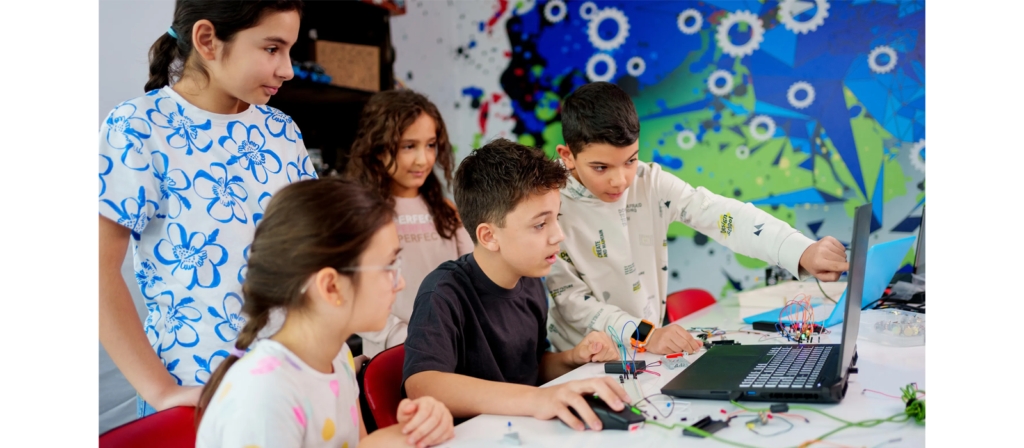
How Anecdotal Records Enhance Student Learning
The true power of the anecdotal record lies in how it enhances student learning daily. When used intentionally, these real-time observations don’t just describe what happened—they guide what happens next. By capturing genuine moments of learning, curiosity, frustration, or collaboration, teachers can tailor instruction to meet the unique developmental needs of each student.
Making Learning Visible
Anecdotal records make learning visible. Instead of assuming where a child is developmentally based on age or grade level, teachers have documented, real-life examples of student thinking and behavior. This helps bridge the gap between what a child knows and how they demonstrate it. For instance:
- A child may not complete a worksheet correctly, but can verbally explain the math concept when playing with blocks.
- A quiet student might not speak up during circle time but is observed comforting a classmate after a conflict.
These moments matter. Through anecdotal recording, teachers can validate different expressions of knowledge and growth.
Supporting Differentiation and Inclusion
One of the most impactful uses of anecdotal records is in differentiating instruction. Every child learns differently—some need more time, others need more challenge. By tracking progress over time through short, consistent entries, teachers can:
- Adjust the difficulty of tasks
- Introduce scaffolds
- Offer enrichment opportunities
- Group students based on developmental needs, not just age
In inclusive classrooms, anecdotal records are invaluable for supporting neurodiverse learners. They help identify triggers, patterns, strengths, and coping strategies that inform IEPs, behavior plans, and daily classroom accommodations.
Promoting Reflection and Self-Awareness
Anecdotal records also encourage student reflection. When shared appropriately, these documented moments allow students to revisit their progress and celebrate growth. A teacher might say, “Remember when you built the bridge from blocks and said, ‘It’s strong enough to hold the dragon!’? Look how your problem-solving has developed.”
This boosts self-esteem and nurtures a growth mindset. Students begin to see learning not just as performance, but as a process.
Creating a Culture of Observation
In classrooms where anecdotal records are used consistently, a culture of curiosity and observation develops. Teachers become more attuned to their students, and students feel more seen. This fosters stronger relationships, deeper engagement, and a more respectful classroom climate.
Ultimately, anecdotal records are not just tools for documenting—they’re catalysts for responsive teaching. They transform everyday classroom interactions into meaningful learning opportunities, helping educators meet students where they are and guide them to where they can go.
Key Features of Effective Anecdotal Recording
Not all anecdotal records offer the same value. In order for an anecdotal record to truly serve as an educational tool, it must be clear, focused, and grounded in observation rather than opinion. Teachers must move beyond casual notes and aim for structured, purposeful documentation that supports learning and development.

The following are the essential characteristics that define effective anecdotal recording:
First, objectivity must come before opinion.
A well-written anecdotal record describes only what the teacher sees and hears. It should never include judgment, assumptions, or personal interpretations. For example, instead of writing “James was rude to his friend,” a more appropriate and objective version would be, “James said, ‘You can’t play with us,’ and turned his back on the group.” This form of documentation is factual, observable, and verifiable by others, making it far more useful for assessment and planning.
Second, specificity and detail are critical.
Strong anecdotal records provide a clear picture of the behavior. Vague statements such as “She seemed happy” are too subjective to be useful. A more effective version might be: “At 9:20 AM during free play, Lily clapped her hands and said, ‘I did it!’ after stacking all the blocks without them falling.” The goal is to write an account that any colleague could read and visualize without needing further explanation.
Third, every record should include time and context.
Without context, behavior can easily be misinterpreted. Teachers should always include when and where the observation occurred, along with the specific classroom situation or learning activity. For instance, a complete record might read: “On April 11 at 10:10 AM, during snack time, Ava offered her banana to a friend who had forgotten their snack.” This small moment gives insight into social development, empathy, and group dynamics.
Fourth, effective anecdotal records align with learning goals.
Each record should relate to a specific area of development, such as language use, Feinmotorik, social-emotional learning, or problem-solving. Anecdotal records that connect to the curriculum or learning outcomes make it easier for teachers to plan next steps and provide targeted support. In contrast, random or disconnected notes offer little value in long-term educational planning.
Fifth, brevity with substance is ideal.
Anecdotal records should be short but meaningful. They are not meant to be long narratives. In most cases, three to five well-written sentences are enough to capture a child’s behavior and learning. For example, consider this clear and concise entry: “During outdoor play at 11:00 AM, Noah balanced across the beam without assistance, then jumped down and yelled, ‘I’m a ninja!’” This one observation reveals information about Noah’s gross motor skills, risk-taking, self-expression, and confidence.
Sixth, frequency and consistency matter.
A single anecdotal record is helpful, but consistent records over time create a much clearer picture of a child’s learning journey. Teachers should aim to record regular observations across different domains, such as literacy, numeracy, social behavior, and physical activity. The goal is to create a well-rounded portfolio of learning that reflects growth over weeks or months, not just isolated events.
In summary, an effective anecdotal record is specific, objective, time-bound, relevant, and concise. It provides meaningful evidence of student learning and offers educators a reliable foundation for decision-making, communication, and reflection. When written well and recorded regularly, these brief notes become essential tools that shape quality teaching and personalized support for every learner.
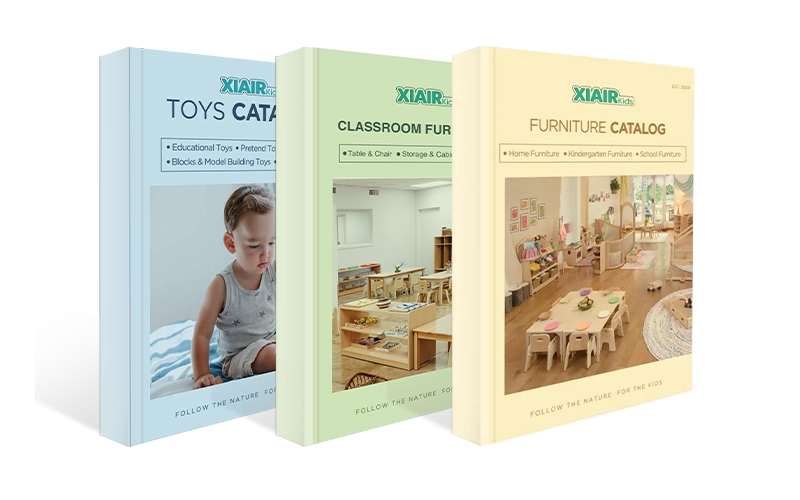
Receive a free catalog and custom layout to help you design your ideal classroom easily.
How to Write a Strong Anecdotal Record
Mastering the art of writing a strong anecdotal record is essential for any early childhood educator, especially in Montessori or Reggio-inspired settings where observation is central to teaching. Whether you’re documenting student behavior for internal use, parent communication, or educational assessments, your goal is the same: to transform a real classroom moment into a meaningful piece of data that supports learning.
To ensure consistency, clarity, and value, here is a step-by-step guide to writing effective anecdotal records, with real-life anecdotal record examples and practical guidance that you can apply immediately.
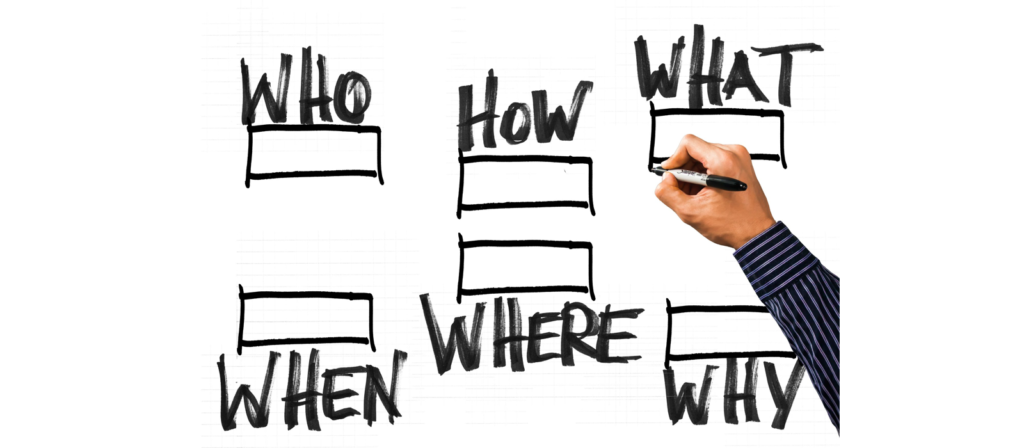
Step 1: Know What You’re Looking For
Before you begin writing, it’s important to understand what qualifies as a record-worthy moment. Not every action needs to be documented. Strong anecdotal recording focuses on:
- Behaviors tied to learning goals (language, motor skills, social interaction)
- Unusual or unexpected behavior (positive or challenging)
- Milestones or repeated patterns
- Key events during transitions, play, or instruction
This ensures your records have both relevance and instructional value.
Step 2: Observe Without Intervening
Effective anecdotal recording starts with passive, non-intrusive observation. Watch the child interact naturally in their environment. Let the learning unfold. Then, as soon as the moment ends—or as close to it as possible—begin documenting.
When observing, ask yourself:
- What is the child doing?
- What are they saying?
- What tools or materials are they using?
- Who else is involved?
Step 3: Write Objectively, Not Interpretively
A strong anecdotal record uses neutral, factual language. Do not include feelings, guesses, or conclusions about what you think the child was feeling or intending. For example:
Instead of writing:
“Daniel was frustrated because he couldn’t build the tower.”
Write:
Daniel attempted to stack the blocks four times. Each time, they fell. He crossed his arms and said, ‘This is too hard,’ then walked away.”
This version is more accurate, allowing readers to interpret the event based on real data.
Step 4: Use the Correct Format
Every anecdotal record should include four essential parts:
- Date and Time – When the observation took place.
- Setting or Context – Where it happened and what was going on at the time.
- Beobachtung – The exact words and actions of the student.
- Follow-up (optional) – A note for later analysis or planned response.
Some educators also find it helpful to apply the A-B-C format—Antecedent, Behavior, Consequence—especially when documenting behavioral patterns. In this approach:
- Antecedent captures what happened immediately before the behavior,
- Behavior is what the student did or said.
- Consequence describes what happened as a result.
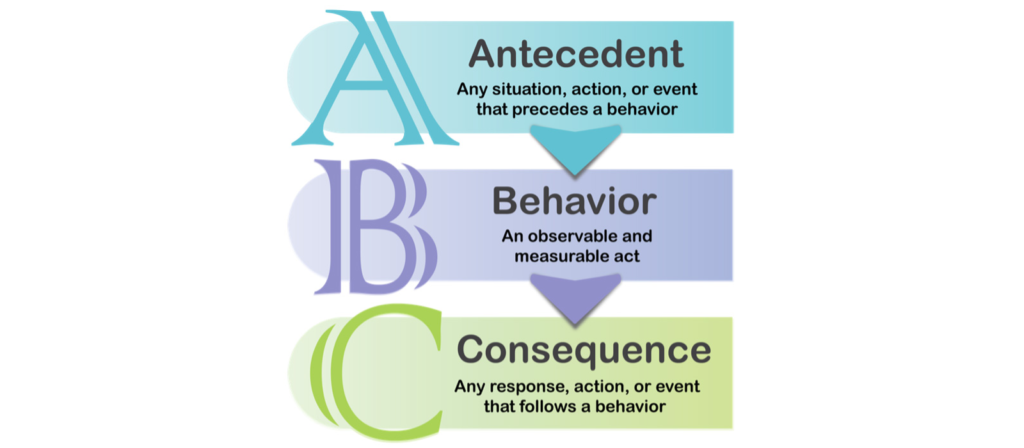
This model is particularly useful when trying to understand repeated behaviors or when planning support strategies for social-emotional development.
Here’s a clear anecdotal record sample that illustrates a standard narrative format:
Date: May 5, 2025
Time: 10:30 AM
Setting: Outdoor play area
Beobachtung: “Emma picked up a watering can and walked to the garden. She poured water onto the tomato plant and said, ‘I’m helping it grow!’ She then returned the can to the shelf.”
Follow-up: Demonstrates responsibility and understanding of plant care (science/life skills).
This example of an anecdotal record is concise, objective, and developmentally relevant. It tells us something valuable about the child’s knowledge and behavior, while also offering a possible direction for future teaching.
Step 5: Use an Anecdotal Record Template
To keep your observations consistent, consider using a structured anecdotal record template. This helps organize your notes and ensures you’re capturing the right information each time. Templates are especially helpful when multiple educators contribute observations to a single student profile.
You can download our free anecdotal record template here:
Anecdotal Record Template – Editable PDF
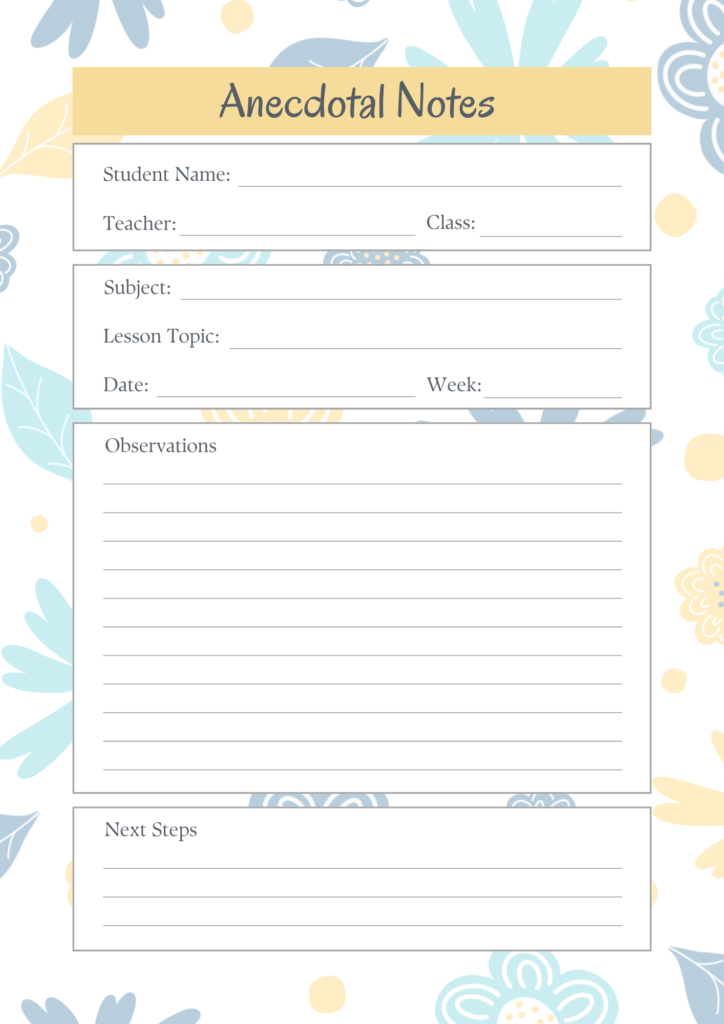
This makes it easier for educators, assistants, and administrators to record, analyze, and share sample anecdotal records of students.
Step 6: Connect Observations to Learning Outcomes
Once your anecdotal records are written, the next step is to use them. Match the behavior to a developmental domain or curriculum standard. For instance, a child working collaboratively with peers could be tied to social-emotional learning outcomes, while one narrating a story during drawing time might show language development.
Connecting anecdotal records to teaching goals transforms them into a living assessment tool—one that reflects real learning as it happens.
Recap: What Makes an Anecdotal Record Strong?
To summarize, here are the essential ingredients of a well-written anecdotal record:
- Specific and time-bound
- Objective and factual
- Aligned with learning goals
- Brief but detailed
- Written promptly
- Organized using a clear structure
When done right, these records provide clear evidence of student development and support truly personalized instruction.
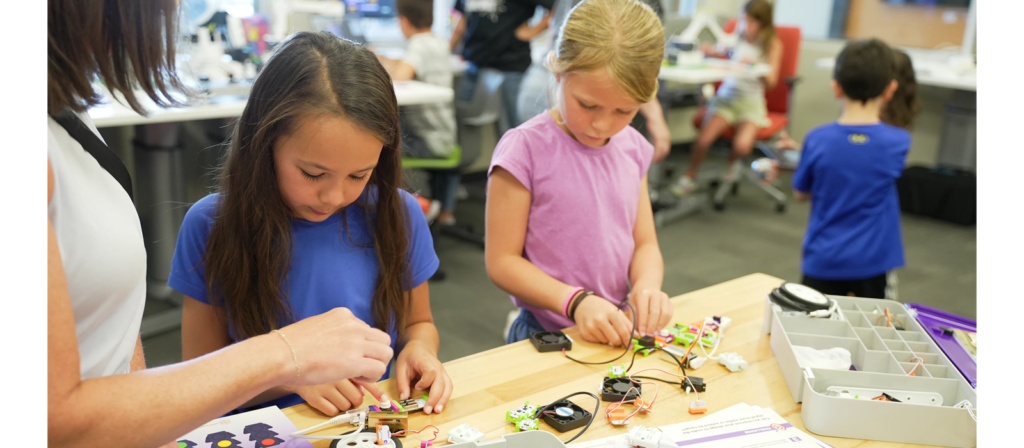
Anecdotal Record Examples in Early Education
Understanding how to apply anecdotal recording in real-world classroom situations becomes easier when you can see actual samples. This section provides practical anecdotal record examples drawn from early childhood environments. Each example of an anecdotal record demonstrates how small, observed moments can be transformed into valuable learning insights.
These sample anecdotal records of students are organized by developmental domains: social-emotional, cognitive, language, motor skills, and approaches to learning. Each example follows a standard anecdotal record template, including date, time, context, and observation.
A Biased Anecdotal Note Example
Date: April 22, 2025
Time: 10:30 AM
Kontext: Reading corner
Beobachtung: Jasmine was lazy and didn’t try to participate in story time. She looked bored and didn’t care about the book.
Reflection: She’s often uninterested and difficult to engage.
Why it’s biased:
This note includes subjective language and assumptions. Words like “lazy” und “didn’t care” are based on interpretation, not observable behavior. It fails to describe what Jasmine did or said, and instead passes judgment on her character. This kind of recording lacks objectivity and reduces the opportunity for professional analysis or supportive intervention.
A Non-Biased Anecdotal Note Example
Date: April 22, 2025
Time: 10:30 AM
Kontext: Reading corner
Beobachtung: Jasmine sat with her legs crossed, looked away from the book, and did not respond when the teacher asked, “What do you see on this page?” She remained quiet during the rest of the group discussion.
Reflection: Further observation is needed to understand her engagement patterns during story time.
Why it works:
This note focuses on specific, observable behavior. It avoids interpretation and describes only what was seen and heard. Instead of labeling the student, it allows room for professional reflection and follow-up. This objective approach aligns with the definition of a quality anecdotal record and supports data-informed teaching.
Sozial-emotionale Entwicklung
Date: April 2, 2025
Time: 9:15 AM
Kontext: Morning group circle
Beobachtung: During circle time, Ethan raised his hand before speaking and said, “I want to wait my turn like yesterday.” When another child interrupted, he said, “It’s okay, you can go first.”
Reflection: Demonstrates self-regulation and empathy.
This anecdotal record example shows emotional growth and awareness of classroom norms. It also serves as documentation for assessing social-emotional competencies.
Kognitive Entwicklung
Date: April 5, 2025
Time: 10:20 AM
Kontext: Independent work time
Beobachtung: Sophia selected a number puzzle and arranged the digits 1 to 10 correctly on her first try. She then clapped and said, “I know what comes next every time now!”
Reflection: Indicates growing number recognition and sequencing ability.
This is a strong example of an anecdotal record that supports curriculum goals related to numeracy and problem-solving.
Sprachentwicklung
Date: April 10, 2025
Time: 11:00 AM
Kontext: Art area
Beobachtung: While drawing, Leo described his picture: “This is a rocket. It goes up to the stars. My brother is the pilot!” He later explained his choice of colors, saying, “Red is fast.”
Reflection: Highlights expressive vocabulary and storytelling skills.
Such anecdotal records examples help track the development of oral language and narrative abilities in a natural context.
Feinmotorik
Date: April 15, 2025
Time: 10:45 AM
Kontext: Practical life shelf
Beobachtung: Maya used tongs to transfer small beads from one bowl to another without dropping any. She repeated the task four times, each with increased speed and accuracy.
Reflection: Demonstrates fine motor control, hand-eye coordination, and perseverance.
This anecdotal record sample connects well to early Montessori materials and supports planning for motor skill development.
Approaches to Learning
Date: April 18, 2025
Time: 9:40 AM
Kontext: Building area
Beobachtung: Lucas attempted to build a tall tower using blocks. After it fell three times, he adjusted the base and tried again. He smiled and said, “Now it’s strong.”
Reflection: Shows persistence, problem-solving, and learning through trial and error.
This example anecdotal record reflects learning attitudes like resilience and self-direction, key competencies in both Montessori and Reggio educational philosophies.
Using These Examples in Practice
By reviewing and reflecting on these sample of anecdotal records of students, educators begin to understand the depth of information that can be captured in just a few lines. These records go beyond behavior management or praise—they reveal learning behaviors, problem-solving styles, emotional regulation, and interaction patterns.
If your team is new to this practice, consider printing several anecdotal record examples and using them in staff training. Role-play, discussion, and feedback sessions using real or simulated classroom observations can quickly improve confidence in writing quality anecdotal records.
You can download our full anecdotal record template and sample pack here:
Download: Sample Anecdotal Records and Templates for Early Education
Real-life classroom examples are often the best way to learn what high-quality anecdotal records look like. Use these samples as a model, and you’ll soon see how small observations lead to big insights.
Comparing Anecdotal Records with Other Observation Methods
While anecdotal recording is a powerful and flexible tool, it is not the only method available for observing and documenting student learning. To fully appreciate the value of the anecdotal record, it’s helpful to compare it with other common observation techniques used in early childhood education. Each method serves a unique purpose, but anecdotal records offer distinct advantages that make them especially effective in dynamic, child-centered classrooms like those based on Montessori and Reggio Emilia philosophies.
Checklists vs. Anecdotal Records
Checklists are structured tools that allow teachers to quickly mark whether a child has demonstrated a particular skill or behavior. While they are useful for standardized reporting and curriculum tracking, they offer limited context and lack the rich detail that anecdotal records provide.
For example, a checklist might indicate that a child can “sort objects by color,” but it won’t reveal how the child approached the task, what strategies they used, or how they reacted when the task became challenging.
In contrast, an anecdotal record example for the same event might read:
“During work time, Ava selected red, blue, and green blocks. She said, ‘Red goes here like my shoes!’ and smiled as she sorted them into bowls.”
This gives us not only evidence of color sorting but also a glimpse into Ava’s connection, verbal expression, and confidence—all essential aspects of early development.
Comparison Table: Checklists vs. Anecdotal Records
| Aspekt | Checklists | Anekdotische Aufzeichnungen |
|---|---|---|
| What It Is | A pre-set list of skills to check off | Brief narrative descriptions of observed behavior |
| Stärken | Quick, standardized, easy to quantify | Rich detail, authentic, captures individual expression |
| Limitations | Lacks context, ignores student voice | Takes more time, requires training |
Rating Scales vs. Anecdotal Records
Rating scales assign a numerical value or descriptive level to a child’s performance on specific tasks or behaviors. While efficient for large groups, these scales risk oversimplifying complex developmental patterns.
For instance, a teacher might rate a child’s cooperation as “2 – sometimes cooperates,” but this does not explain when or why cooperation occurs or fails.
Anecdotal records, on the other hand, offer insight into the how and why, not just the what. A well-documented example of an anecdotal record might reveal that the child shares willingly during playtime but resists when transitioning between activities—a critical nuance lost in a rating scale.
Comparison Table: Rating Scales vs. Anecdotal Records
| Aspekt | Rating Scales | Anekdotische Aufzeichnungen |
|---|---|---|
| What It Is | Numeric or descriptive rating of behavior | Narrative observation of specific incidents |
| Stärken | Fast, quantifiable, easy to track group trends | Contextual, child-centered, nuanced |
| Limitations | Vague, lacks behavior-specific detail | Requires time and focus to write accurately |
Time Sampling vs. Anecdotal Recording
Time sampling involves observing and recording behavior at specific time intervals. While it’s useful for identifying frequency patterns, it can miss important interactions that happen outside the chosen window.
For example, if a child only exhibits a behavior after free play ends, time sampling focused during circle time won’t catch it.
In contrast, anecdotal recording captures spontaneous, significant events regardless of timing. The teacher remains responsive to meaningful moments as they happen, making anecdotal records more authentic and personalized.
Comparison Table: Time Sampling vs. Anecdotal Records
| Aspekt | Time Sampling | Anekdotische Aufzeichnungen |
|---|---|---|
| What It Is | Observation at fixed time intervals | Observation when significant behavior occurs |
| Stärken | Tracks frequency and duration of behavior | Captures meaningful, natural interactions |
| Limitations | Can miss key moments outside time frame | Can miss key moments outside the time frame |
Running Records vs. Anecdotal Records
Running records are detailed, minute-by-minute narratives of everything a child does over a fixed period. While this method offers depth, it is extremely time-consuming and often impractical in busy classrooms.
Anecdotal records provide a middle ground: rich insight without the need to track every single movement. They are selective, purposeful, and efficient—ideal for real-time use in fast-paced learning environments.
Comparison Table: Running Records vs. Anecdotal Records
| Aspekt | Laufrekorde | Anekdotische Aufzeichnungen |
|---|---|---|
| What It Is | Continuous, detailed account of all behavior in a time block | Snapshot of a specific, meaningful behavior |
| Stärken | Extremely detailed, captures full sequence | Efficient, selective, easy to implement daily |
| Limitations | Time-intensive, hard to maintain | May miss micro-details between observations |
Portfolios and Work Samples
Student portfolios showcase progress through drawings, writing samples, and completed activities. These provide physical proof of development but often lack contextual information. This is where anecdotal records add tremendous value.
Pairing a child’s drawing with a corresponding anecdotal record sample like “Emma said, ‘This is me flying to the moon. I used red because it’s my favorite rocket color,’” gives meaning to the work and documents language development, imagination, and emotional connection.
Comparison Table: Portfolios vs. Anecdotal Records
| Aspekt | Portfolios/Work Samples | Anekdotische Aufzeichnungen |
|---|---|---|
| What It Is | Physical evidence of learning (artwork, assignments) | Descriptions of behavior or learning in action |
| Stärken | Visual record, student-driven content | Contextual, complements visual work |
| Limitations | Lacks explanation or behavioral insight | Doesn’t include physical output |
Disadvantages of Anecdotal Records
While anecdotal records are rich in detail, they can be time-consuming to write and manage. In a busy classroom, it’s difficult to capture every meaningful moment for each child without falling behind. Inconsistent formatting and a lack of structure can also make records harder to compare or use effectively across different teachers or classrooms.
Another concern is subjectivity. Without proper training, teachers may include opinions or assumptions instead of sticking to observable facts. This can affect the accuracy and value of the record. And because anecdotal recording is qualitative, it’s less suited to standardized reporting, making it harder to measure trends without a clear system in place.
Common Mistakes to Avoid with Anecdotal Recording
Even experienced educators can fall into traps when writing anecdotal records. Whether it’s due to time constraints, unclear expectations, or lack of training, common mistakes can reduce the effectiveness of this otherwise powerful observation tool. In this section, we’ll walk through frequent errors and how to avoid them, helping you refine your anecdotal recording process and ensure it supports real learning outcomes.
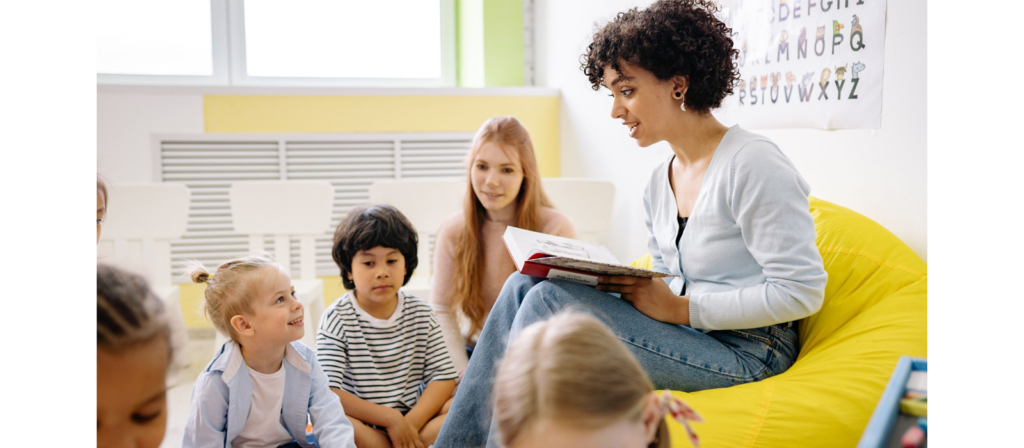
Mistake 1: Writing Subjectively Instead of Objectively
One of the most critical errors in an anecdotal record is allowing opinion, assumption, or emotion to cloud the observation. Statements like “Liam was being defiant” or “Sofia looked bored” introduce bias.
A well-written anecdotal record should focus purely on observable facts. For example, rather than saying “Jackson was angry,” a more objective version would be:
“Jackson crossed his arms, stomped his foot, and said, ‘I don’t want to clean up!’”
This objective language ensures the anecdotal record is usable for analysis and review by colleagues, administrators, or even parents.
Mistake 2: Being Too Vague
General statements such as “Emma played nicely” or “Lucas did his work well” provide no actionable insight. Vague language dilutes the value of the observation.
Instead, use precise, detailed descriptions like:
“At 10:15 AM, during center time, Emma handed a red crayon to a peer and said, ‘You can use mine.’”
This specific example supports social-emotional assessment and classroom planning. Use every anecdotal record sample as an opportunity to gather rich, meaningful data, not filler.
Mistake 3: Skipping the Context
Without a clear context, even a good observation loses meaning. Teachers often forget to note the time, location, or activity in their records.
Every anecdotal record should include:
- Date and time
- Physical location
- What was happening at the time
For instance:
“During outdoor play at 10:45 AM, Elijah built a structure from foam blocks and said, ‘This is a fire station.’ He showed it to a friend and said, ‘You be the firefighter.’”
This situational detail reveals important developmental cues in both social role-play and communication.
Mistake 4: Recording Only Negative Behavior
Focusing anecdotal recording solely on misconduct, frustration, or breakdowns results in an unbalanced student profile. Positive behaviors, successes, and joyful discoveries are equally important to document.
An effective assessment portfolio should contain anecdotal records examples across a range of behaviors:
- Problem-solving
- Kreativität
- Acts of kindness
- Self-regulation
- Learning breakthroughs
Capturing these moments provides a more complete picture of the child’s development, which is especially vital in early education.
Mistake 5: Waiting Too Long to Record
Another common mistake is delaying the writing process. Teachers often plan to jot something down later, but forget the details or misremember the exact behavior.
To avoid this, keep a notepad, tablet, or digital form handy during the day. Use a structured anecdotal record template that makes fast input possible. Even brief notes captured in the moment are better than perfect sentences recalled hours later.
Mistake 6: Overloading the Record with Irrelevant Information
Sometimes, educators include too many unrelated details. While context is essential, the observation should remain focused. If a student’s drawing is the focus, avoid diverging into what their peer said or how loud the room was—unless those factors influenced the child’s behavior directly.
Keep the anecdotal record concise and centered on one specific moment. Overloading the record can obscure the main learning indicator you’re trying to document.
Mistake 7: Not Connecting Observations to Learning Domains
A great anecdotal record doesn’t just capture what happened—it links the event to a learning area such as language development, social skills, or numeracy. If you don’t tag or categorize the record, it becomes harder to use during evaluations or parent meetings.
Use a labeling system or checklist that associates each observation with one or more developmental goals. This is especially helpful when collecting samples of anecdotal records of students for report writing or conferences.
Mistake 8: Using Inconsistent Formats
Inconsistent formatting leads to confusion and missed information. Without a standard anecdotal record template, entries may lack crucial components like time, setting, or the child’s exact words.
To avoid this, train your staff using pre-built anecdotal record examples and adopt a consistent format across the classroom or school. Whether digital or handwritten, all observations should follow a similar structure to ensure clarity, usability, and professional quality.
Final Tip: Think of Each Anecdotal Record as a Story Snapshot
Each anecdotal record tells a piece of the child’s learning story. When written poorly, that story is fragmented or misleading. When written with care, it becomes a powerful narrative of growth, resilience, and potential.
Avoiding these common mistakes ensures your anecdotal records are accurate, insightful, and worthy of inclusion in any child’s educational journey.
How to Use Anecdotal Records for Assessment
Anecdotal records are more than just classroom observations. When used intentionally, they become a cornerstone of authentic, child-centered assessment. While traditional tests often focus on what children can’t do, anecdotal recording focuses on what children can do—and how they do it in real-time.
This shift in perspective is especially vital in early education, where much of the learning is social, emotional, and experiential. The anecdotal record provides a flexible, human-centered tool that captures learning as it happens, making it easier for teachers to assess growth and guide development.

Turning Observation into Assessment
The first step in using an anecdotal record for assessment is recognizing its role in documentation and evaluation. By collecting multiple anecdotal record samples across time, teachers can identify patterns, measure progress, and respond to student needs with intention.
Zum Beispiel:
- A single anecdote of a child using polite language shows a moment of social development.
- Multiple records showing increasing use of complete sentences reflect language growth over time.
- A consistent series of records about sharing or helping others indicates the development of empathy and emotional maturity.
Together, these records become a developmental timeline—an authentic assessment tool grounded in real experiences, not test scores.
Aligning Observations with Learning Standards
Most educators operate under a framework of learning outcomes or standards, whether they’re national, provincial, or school-based. One of the biggest strengths of anecdotal records is their alignment potential.
For instance, a standard may state:
“Child demonstrates the ability to collaborate with peers during structured or unstructured activities.”
A corresponding anecdotal record example might be:
“During block play at 10:30 AM, Oliver said, ‘Let’s build it together,’ and handed two blocks to a classmate. The two worked side-by-side to create a tower.”
This one observation directly supports that standard, and over time, additional entries build further evidence.
Supporting Individualized Learning Plans
Whether you’re creating an IEP (Individualized Education Plan), a behavior plan, or a differentiated lesson strategy, anecdotal records offer the real-time evidence needed to support your decisions.
Zum Beispiel:
- A student struggling with transitions may show consistent frustration in anecdotal records collected over several weeks.
- A record might highlight emerging skills that suggest a student is ready for more advanced challenges in numeracy or fine motor work.
Without anecdotal data, these insights might go unnoticed.
Strengthening Parent and Administrator Communication
One of the most practical uses of anecdotal records is during meetings with parents, other teachers, therapists, or school leaders. Rather than relying on vague comments like “your child is doing well,” teachers can share specific, documented examples:
“Here’s an observation from March 18th: ‘During clean-up, Ava picked up all the markers, sorted them by color, and said, ‘I like things neat.’’ This shows her self-organization skills developing over time.”
Having a file of sample anecdotal records of students to draw from provides not only credibility but also builds trust and transparency in relationships with families and educational teams.
Using Records for Portfolio-Based Assessment
Many early education programs rely on portfolios to demonstrate student learning. Anecdotal records fit seamlessly into this model by:
- Adding narrative context to student work
- Highlighting behaviors not visible in assignments (like collaboration or emotional regulation)
- Tracking developmental domains in a living, evolving format
Pairing a child’s artwork with a related anecdotal record example gives the work meaning:
“After painting a rainbow, Lily pointed to the blue stripe and said, ‘That’s for my grandma. She loves blue.’”
This simple entry turns a piece of art into a record of self-expression and emotional connection.
Tracking Progress Over Time
Finally, when anecdotal records are collected consistently and organized well (more on that in the next section), they help teachers and school leaders:
- Monitor long-term growth
- Spot patterns and learning gaps
- Evaluate the effectiveness of instructional strategies
- Adjust goals based on real student behavior, not assumptions
Whether in a formal Montessori school, a Reggio-inspired center, or a traditional kindergarten, the anecdotal record remains one of the most reliable, responsive, and student-focused forms of assessment available.
Organizing and Managing Your Anecdotal Records
Anecdotal records are only valuable if they are organized and accessible. Too often, teachers collect dozens—or even hundreds—of observations only to find them scattered in notebooks, loose paper files, or mixed within digital folders. Without a clear system, valuable insights get buried, trends are missed, and assessment becomes guesswork.
To make your anecdotal recording work for you, it’s essential to build an organized, consistent, and sustainable documentation process. Below are the key strategies for managing anecdotal records effectively in early education settings.
Choose a Consistent Format
Whether you’re using paper, spreadsheets, or digital apps, start by selecting a clear and consistent anecdotal record template. This ensures every entry includes the essential elements:
- Date and time
- Observation context
- Objective description
- Related learning domain
- Follow-up or notes (if applicable)
This uniformity improves clarity and allows multiple educators to contribute sample anecdotal records of students without confusion.
Organize by Student
The most common and effective way to manage anecdotal records is to file them by student. Whether in a binder or a digital folder, each child should have a dedicated portfolio that includes:
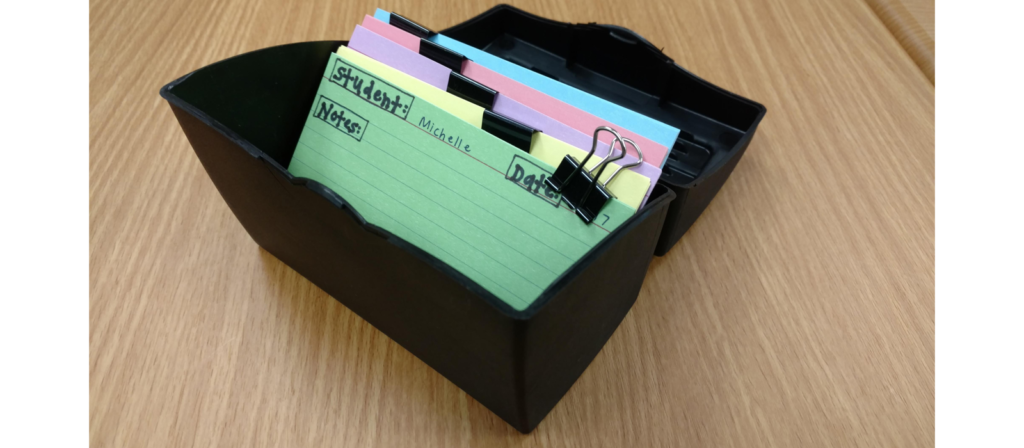
- Printed or typed anecdotal records
- Work samples
- Reflections or goal updates
- Checklists or rubrics (if used alongside)
This setup allows for easy retrieval during parent meetings, assessment reviews, or progress evaluations.
If using physical documentation, color-coded folders by class level or domain can make access even faster. In digital environments, shared cloud folders or apps like Google Drive, OneDrive, or Dropbox work well.
Organize by Learning Domain
In addition to sorting by student, it’s also helpful to tag each anecdotal record with its relevant learning domain:
- Language and Literacy
- Sozial-emotionale Entwicklung
- Kognitive Fähigkeiten
- Fine/Gross Motor Development
- Approaches to Learning
This is especially useful when evaluating class-wide performance in one area or preparing for curriculum reviews.
For example, a principal may ask, “Can you show me documentation of social-emotional growth for your class?” With a domain-based tagging system, you can immediately pull relevant anecdotal record examples across all students.
Use Labels, Codes, or Digital Tags
Whether on paper or digital platforms, using a consistent coding system allows for easier cross-referencing. For example:
- “LD” for Language Development
- “FM” for Fine Motor
- “SE” for Social-Emotional
Each anecdotal record can be labeled at the top or within a drop-down menu. This also makes trend analysis easier, especially when reviewing samples of anecdotal records of students during evaluations or reports.
Set a Regular Recording Routine
One reason teachers abandon anecdotal recording is a lack of time. The key to overcoming this is scheduling it as a regular part of your day.
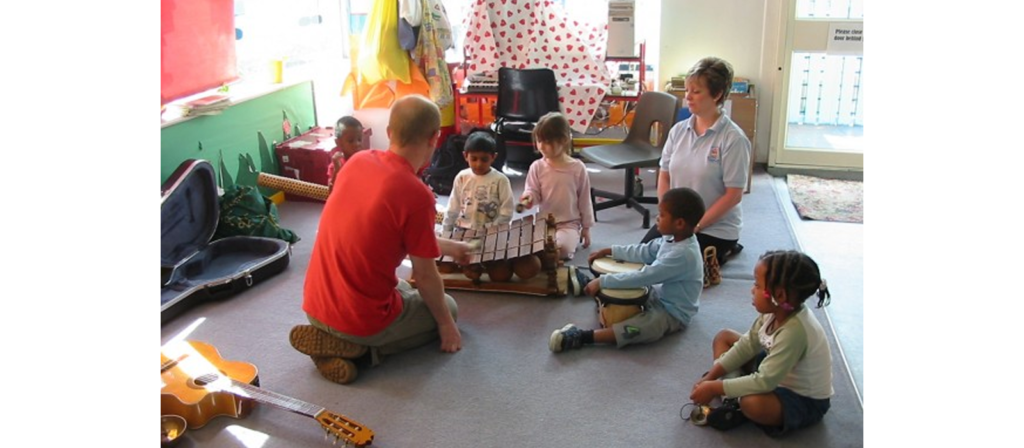
Zum Beispiel:
- Record 2–3 observations during center time each day
- Dedicate 15 minutes every Friday to entering digital versions
- Rotate focus—Monday for literacy, Tuesday for math, etc.
By embedding anecdotal documentation into your routine, it becomes a sustainable practice instead of an afterthought.
Train and Involve Your Team
If you’re leading a school or managing a classroom with assistants, train all staff on how to observe and record effectively. Share anecdotal record examples, do role-play exercises, and provide practice templates.
Make sure everyone understands:
- The anecdotal record definition
- What makes an observation “record-worthy”
- The importance of objectivity and clarity
Consistency across staff not only improves documentation quality, it ensures a more accurate, whole-child picture for every student.
Review and Reflect Regularly
A pile of anecdotal records is just data—until it’s used. Schedule regular review sessions to reflect on what the records are telling you:
- Are there patterns of strength or struggle?
- Are certain students undocumented?
- Are instructional changes needed?
These review points allow you to turn documentation into action and ultimately improve learning outcomes.
In summary, a strong system for organizing and managing anecdotal records saves time, boosts effectiveness, and turns simple observations into professional-level assessment tools. Whether you’re a solo teacher or part of a larger school team, structure matters. Invest in it early, and you’ll reap the rewards daily.

Receive a free catalog and custom layout to help you design your ideal classroom easily.
Häufig gestellte Fragen
How frequently should teachers document student observations?
Ideally, teachers should record observations several times per week, ensuring each child is seen regularly over time. Even 2–3 focused notes per day can provide meaningful insight when done consistently.
How do these records help during parent communication?
They provide specific, real-life examples of a child’s behavior, learning, and growth. Sharing clear, dated observations helps build trust and gives parents a deeper understanding of their child’s development in the classroom.
What are the best tools to stay organized?
Digital tools like HiMama, Brightwheel, or Google Forms can streamline observation, tagging, and storage. Even a simple shared folder system with templates can improve consistency and ease of access.
Can anecdotal notes be used in formal assessments?
Yes. While informal in style, when collected systematically, these records support formal assessments, report writing, and decisions related to individualized instruction or intervention planning.
Conclusion: Enhancing Educational Outcomes with Anecdotal Records
The anecdotal record remains one of the most effective tools in early education for observing and understanding authentic student growth. It captures the nuance of learning far beyond test scores, offering real, human insight into how children think, feel, and develop.
When paired with thoughtful planning and responsive environments, anecdotal recording empowers educators to create classrooms that support every moment of discovery. The right observation is only as impactful as the space that allows it to happen. That’s why having learning environments intentionally designed to encourage independence, focus, and interaction matters.
As educators document growth, the surroundings should reflect that same commitment. At TOP Montessoris, we support this by crafting Vorschulmöbel that quietly complements the learning journey, just as a well-written anecdotal record complements the child’s.

